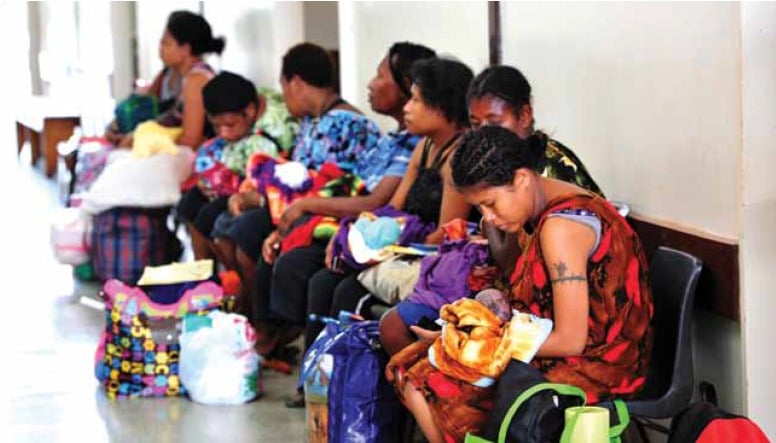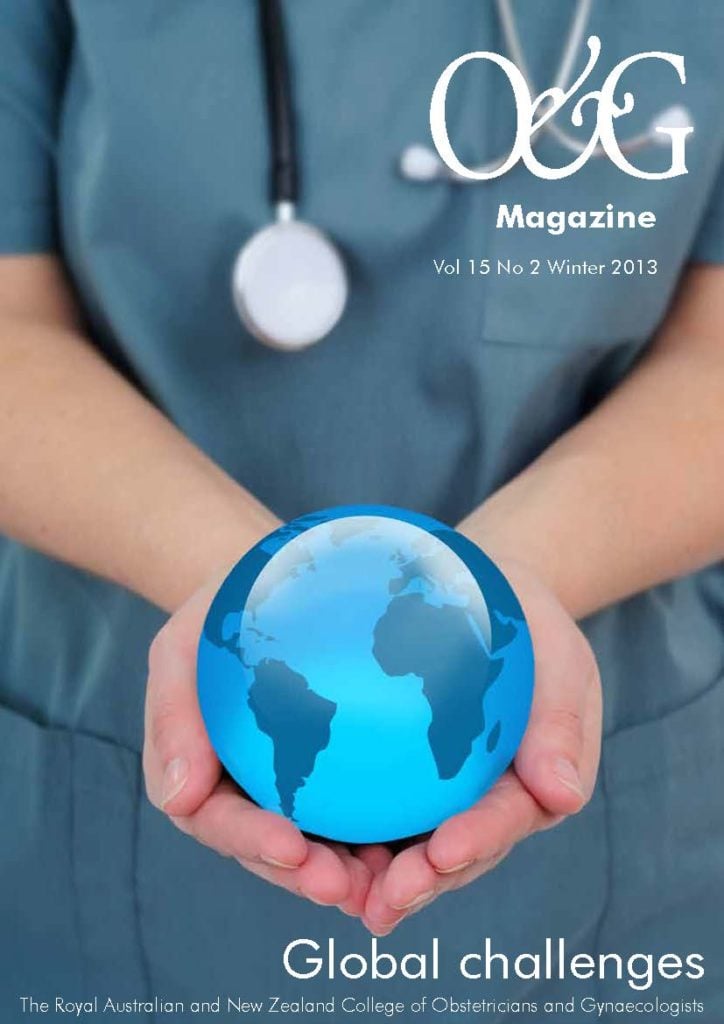‘In the 19th century, the paramount moral challenge was slavery. In the 20th century, it was totalitarianism. In this century, it is the brutality inflicted on so many women and girls around the globe.’
Pulitzer Prize-winning journalists Nicholas D Kristoff and Sheryl WuDunn
Women face challenges from the moment of conception. Writing in 1990, Indian economist and Nobel laureate Amartya Sen drew attention to the fact that millions of women appear to be ‘missing’ from countries in Asia. Sen lamented that, ‘these numbers tell us, quietly, a terrible story of inequality and neglect leading to the excess mortality of women.’ Subsequent research has lent weight to suggestions that the use of ultrasound in some countries has fed a culture of pregnancy termination when a fetus is thought to be female. Others have proposed that infanticide of female babies or neglect and withdrawal of medical care for female children may play an important role in this incredible gender imbalance.
What do we make of a world where pregnancy is terminated or newborns are killed or die as a result of neglect just because they are not boys? How can we possibly tolerate this in the new millennium?
Healthy women, healthy world
In Australia and New Zealand, women now make up the majority of health service providers and the majority of carers in the community. Data from the Australian Bureau of Statistics reveals that women outnumber men as carers by as many as four to one. Similarly, the average number of hours women spend caring for children outnumbers men by two to one, and appears to be increasing. For these reasons alone, the health of women seems fundamental to the wider health and well-being of our communities.
Despite such a pivotal role in community and family health, there are marked and well-described disparities between different groups of women in Australia alone. As a prime example, Indigenous women have a life expectancy more than 15 years less than that of non-Indigenous women – a difference driven by higher rates of violence, cancer and other medical conditions. This incredible health disadvantage is further exacerbated by remoteness. Non-urban women have higher rates of health problems such as diabetes and hypertension, are less likely to participate in cancer-screening programs and are more likely to have a poor diet and to smoke. All of these compelling forces conspire to increase the chance of early death with increasing distance from a city.

What do these women want? Investment in healthcare, postponement of marriage and provision of education and training would be a good start.
Even in urban centres, migrant women are disadvantaged by unfamiliarity with English. This language difficulty means that women find access to health information difficult and are at an educational and employment disadvantage. These women subsequently face extraordinary health challenges, often with minimal family support. In such communities, rates of mental health pathology – depression and post-traumatic stress disorders – are high, coupled with health problems uncommon in our communities since the 19th century: untreated dental disease, nutritional deficiencies and infectious diseases.
Know your neighbours
As bad as things can be for some women in our countries, things are considerably worse only a short flight from the capitals of Australia and New Zealand. Indeed, in some of these countries the problems seem completely overwhelming. Across the globe, well over half a million women die from pregnancy-related causes every year. Although data collection is often limited, it is clear that about 99 per cent of maternal deaths occur in developing nations. Among these deaths, it is estimated that unsafe abortion alone accounts for almost 70 000 deaths annually.
The highest rates of maternal death are found in African countries, where the lifetime risks approach one in 16. To put this in some perspective, lifetime risks in Western nations are rarely above about one in 3000, and the risk in any individual pregnancy is often around one in 10 000. Death, however, is a blunt statistical instrument. It is likely that another 20 million women will suffer serious birth complications, including fistula formation and infertility, each year.
Analyses of the causes of death and debility from pregnancy in developing nations make depressing reading. At the head of the list are difficulties in accessing safe and reliable contraception; and limited or absent access to skilled assistance during birth. Killers that have been tamed in the developed world – haemorrhage, eclampsia, obstructed labour and infection – are still rampant in large areas of our world. The majority of women across the globe still have no access to the most basic elements of maternity care: antibiotics, anticonvulsants, oxytocics, manual removal of the placenta and instrumental vaginal delivery.
In their book Half the Sky – Turning Oppression Into Opportunity For Women, Pulitzer Prize-winning New York Times journalists Nicholas Kristoff and Sheryl WuDunn make the following observation:
Adding to this list of miseries is the needless and pointless practice of female genital mutilation. Girls will commonly undergo such procedures between the ages of six and 12, and face the removal of part or, in some cases, all of their external genitalia. The remaining tissues are often crudely sewn together. Much of this brutality is meted out by other women. Using unsanitary equipment and practices, young girls face the immediate risks of bleeding and infection, sometimes leading to death. In the aftermath, women who subsequently become pregnant face obvious problems during childbirth.
Another aspect of this disrespect for girls and women is the institution of ‘child marriage’. Child marriage can have multiple adverse impacts on the health and life of the young girls involved. Their formal education, so often the key to health and well-being, is often limited. They face increased risk of sexual infections, in particular HIV and papillomavirus, the initiator of most cervical cancers. The likelihood of early pregnancy and the risk of death or disability from birth complications is subsequently high.
Not only birth…
Few people in the developed world realise that cancer of the cervix is the most common malignancy in developing nations. Striking women during their reproductive years, cervical cancer kills almost as many women as pregnancy does. The WHO estimates that there are more than half-a-million new cases every year, and the majority of women affected will die a terrible death from their disease. The screening programs that we take for granted – regular Pap smears and colposcopy when required – are virtually non-existent in many countries and regions. Even when detected, treatment options for many women are extremely limited.
As cervical cancer is associated with the papilloma virus, so the other now-endemic virus, HIV, continues to spread. In developing nations, the majority of women do not know their HIV status. Few are ever tested and the small proportion who are tested and found to carry the virus rarely receive treatment. Transmission of HIV from mother to offspring occurs with high frequency and estimates suggest that more than two million pre-teenage children are living with HIV across the world. The infection is almost always acquired from the child’s mother.
What do women want?
Any review of the health and status of women and girls, on a worldwide basis, makes for depressing reading. Are these problems so overwhelming that nothing can be done?
The question is often asked, ‘What do women want?’ From the perspective of the developing world, some important principles are well recognised:
- Investment in women’s and girls’ health has benefits not only for the individuals, but for society as a whole. Healthy women, healthy world.
- Postponement of marriage and pregnancy until girls actually reach womanhood can dramatically improve the health of women and, in turn, community health.
- Provision of education and training, whether formal education or vocational training, coupled with reliable methods of family planning, have enormous potential to interrupt the otherwise inevitable cycle of disempowerment of women and ensuing poverty.
With such goals in mind, programs that inform and educate girls about reproductive health, prevention of sexual infections, contraception and family planning, HIV transmission and how to seek healthcare are critical. Governments must make preventive care and treatment for reproductive health issues intrinsic to any initiatives.
When speaking at the RANZCOG Annual Scientific Meeting, last year, I was asked by the attendees what do Australian women want. My reply? That women want us to care about women in neighbouring countries, and across the world. They want us to care about disadvantaged women in our own country. And, most importantly, they want society as a whole to be a healthy place for women and their families.
In preparation for the conference I spoke with friends and colleagues about what they wanted specifically from their own healthcare professionals and systems. The responses were consistent. Women rate the following as the most important qualities in healthcare: competence, time, patience, compassion and honesty. While those nouns come from a very middle-class, first-world perspective, they seem apt words to aspire to when considering the health of women across the world:
- Competence: having the skills to help effectively – surmounting distance and poverty.
- Time: taking the time to find out what the problems are and placing them firmly on the global agenda.
- Patience: understanding the magnitude of disadvantage and the entrenchment of barriers for so many women – knowing these problems cannot be solved quickly.
- Compassion: caring enough to actually do something. Not giving up.
- Honesty. Acknowledging the myriad cultural, religious, historical, political, social and economic problems that, even in the 21st century, continue to disadvantage women.
Further reading
Australian Bureau of Statistics. ABS Survey of disability, aging and carers,Australia 2009. Cat. No. 4430.0.
Jha P, Kesler M, Kumar R, et al. Trends in selective abortions of girls in India: analysis of nationally representative birth histories from 1990 to2005 and census data from 1991 to 2011. Lancet 2011; 377: 1921-8.Kristoff, N D, WuDunn S. Half the Sky – Turning Oppression Into Opportunity For Women. Virago. September 2009.
Nour N. An introduction to Global Women’s Health. Rev Obstet Gynecol 2008; 1: 33-37.
Sen A. More than 100 million women are missing. New York Review of Books 37 (20). (20 December, 1990).
About the author
Emma Macdonald is a senior journalist with the Canberra Times. She has won numerous awards for her reportage, including two Walkley Awards, the John Douglas Pringle Award for Journalism and a Vincent Fairfax Ethics in Leadership Fellowship. She writes on social, education and political issues.





Leave a Reply